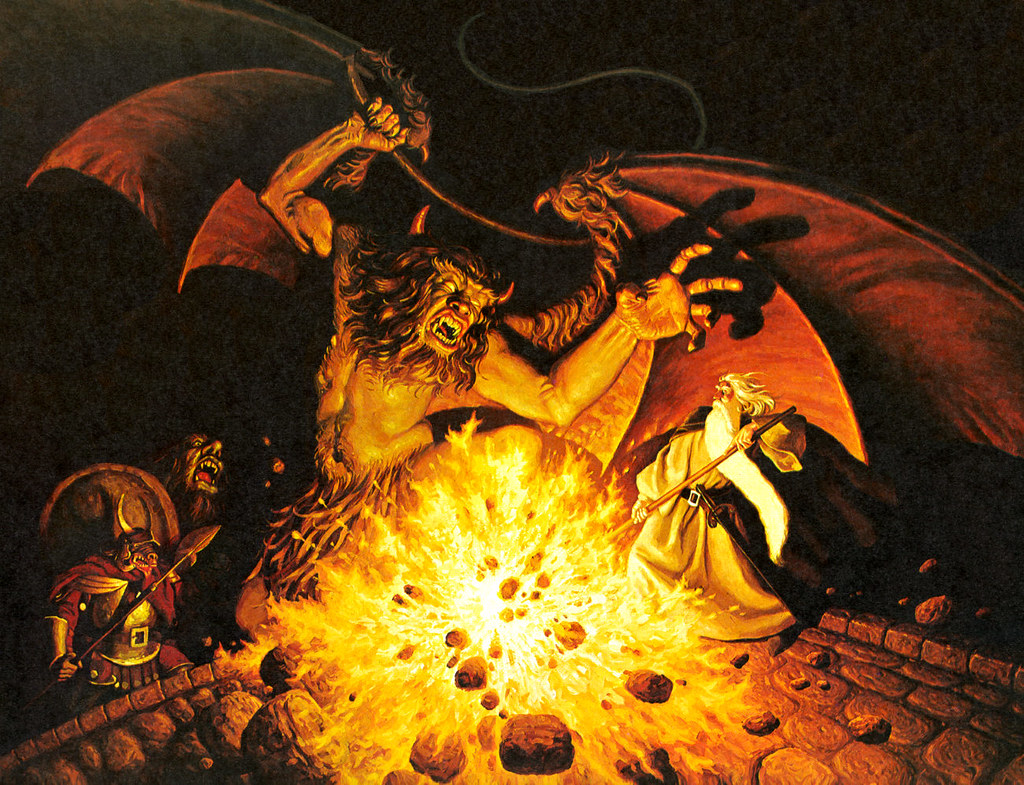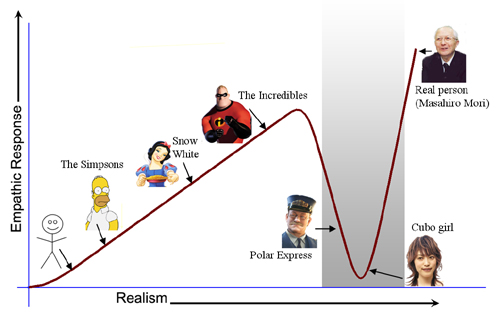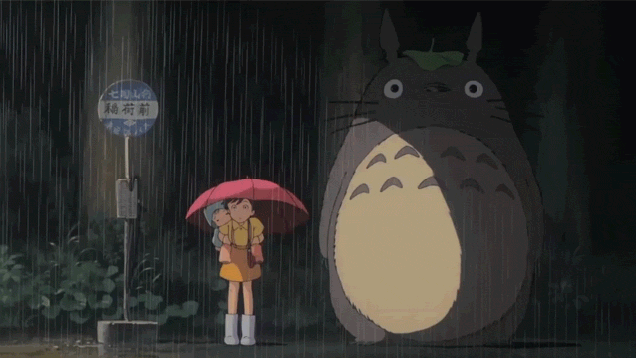Reading 06: Computers' Place in the Visual Arts
Whether it is in the theater or in your living room, computer graphics play a significant role in modern film-making and video games. How important are these visuals to you in terms of the overall experience? Consider, when do graphics detract rather than enhance these mediums and how do you compare modern 3D computer graphics to older say hand-drawn animation or 2D sprite-based graphics?
What Do Visuals Contribute?
It's difficult to approach these topics while avoiding defining what art is, because generally video games, movies, and imagery are mediums and computers are tools. So it's akin to asking what the color blue contributes to the overall experience of a painting.
The importance of visuals, like any tool in the making of art, lies
in whatever it uniquely provides. Oils give a painting visual
texture; lyrics give music a narrative; visuals allow us to share a
visual experience to the exact detail. Few can build a world with
words like Tolkien, but the tale could not visually enter the
collective consciousness without Peter Jackson's help.


Furthermore, computers allow us to create visuals that would otherwise be impossible, or at least impractical. How else do you animate a giant, flaming hellspawn? Here's one example of a visual that's absolutely integral to the art: Superman flying. You can't make a Superman movie without Superman taking flight, one fist forward, cape fluttering in the wind. If Superman doesn't take flight, or worse he does and it looks bad, the movie is ruined.
Every time I've watched Superman with my dad he tells me how the whole theatre cheered when Superman gets his wings in the Fortress of Solitude. On the flip side, if you want to experience the frustration of a none-flying Superman just watch the first nine-and-a-half seasons of Smallville. Here's a hint: this indestructible idiot is afraid of heights. And Amy Adams starts off fat, then eats a deer.
Still, graphics are important even if there are no shots essential for the audience. Toy Story is a brilliant comedy, CGI aside, and would have been a smash hit as a classic 2D animation. But the graphics allow for live-action slapstick and cartoonish exageration. They are amplifying an already fantastic story.
So graphics are important in two ways: they give artists greater story telling capabilities, and may even be essential to meet an audience's expectations.
Just the Bad and the Ugly
Bad graphics can completely de-rail a good story. They rip an
audience out of whatever immersion they may have had. Your mind
can't focus on anything else because it's often just the sense that
somethings a little bit off. Something doesn't quite fit
right. I'm talking about the uncanny valley.
 I hate The Polar Express. I hate that it was the bandwagon
Christmas film of whatever godforsaken year it came out. Making it
completely in CGI serves no purpose, except maybe saving money. All
of the characters are offputting. The know-it-all is worse than Jar
Jar by an order of magnitude or more. This film took a touching book
and transformed it into an offputting festival of jerk kids, jerk
conductors, a jerk hobo, and jerk elves that sound like they're on
the brink of stage four throat cancer.
I hate The Polar Express. I hate that it was the bandwagon
Christmas film of whatever godforsaken year it came out. Making it
completely in CGI serves no purpose, except maybe saving money. All
of the characters are offputting. The know-it-all is worse than Jar
Jar by an order of magnitude or more. This film took a touching book
and transformed it into an offputting festival of jerk kids, jerk
conductors, a jerk hobo, and jerk elves that sound like they're on
the brink of stage four throat cancer.
Bad graphics ruin good movies. Animators don't get any points for coming close; either do it well or don't do it at all. A more subtle instance is this fight scene that shatters immersion when it can't decide if it's live action or animated.
Cartoons, Sprites, and 3D
It appears American cinema will not see any major 2D releases again soon, and that's a shame. The medium drives infects the form and can produce artefacts that don't have a 3D superior or even equal.
For instance, the master work that is Fantasia 2000
or the movies of Studio Ghibli. They execute the "every frame a
painting" philosophy to a degree that has not been attained by 3D
animation.

3D graphics are more capable though. I can't imagine persuading a Disney exec to make another princess cartoon in the post-Frozen era. The format is also often a product of the subject. Superheros, as we saw earlier with Superman, require much care (read, M$NEY) in a live-action or digitally enhanced format. But a cartoon handles them effortlessly; it's literally a moving, talking comic book! But Toy Story is best handled with CGI; they're literally talking, moving toys!
Reviews
La Faim (Hunger) - 1974
This is a short film by Peter Foldes, a pioneer of computer animation. For this film Foldes used a computer to aid in the "key frame" process, where the lead animator (Foldes) produces the most important images, the key frames, and the assistants (software in this case) produce all the frames in between. With the help of Nestor Burtnyk's software package Folde's key frames "glide" from one to the next.
When combined with Foldes' stark, grotesque imagery the effect is chilling. It's a very concentrated example of graphics amplifying the narrative: the style pins a visceral gross feeling to the gluttony it portrays.
Arabesque - 1975
What do you get when you mix sitar music, psychedelics, oscilloscopes, and Lite-Brites? Probably this.
It's sine waves exhibiting interference and resonance. Sometimes with colors. It's pretty to look at, but I think I'm just too far removed in time to completely appreciate it as a technological demonstration.
TRON - 1982
The story is weak and the editing is bad. But boy oh boy is the premise and the aesthetic great! This is an edge case for me where the graphics actually make up for the bad story. Once again the graphics fits the subject material like a glove: it's walking and talking computer programs!
At the time the neon outlines and 3D modeling was a completely new aesthetic, and it is immediately intruiging. It's a completely intuitive portrayal of the inside of a computer.
They cleverly filmed the actors in a grainy black and white. This
allows them to blend in more easily with the special effects,
especially in regards to lighting. It can also provide a dramatic,
old time movie feeling like Nosferatu.

The only "glitches" occur when actors must interact with computer
generated scenery, like steps and depth. But then sometimes they
nail it like this scene where Crom holds on for his life.

My favorite effects are building the light-cycles

Seeing the light-cycle internals

But oddly not the actual light-cycles. I find those visuals pretty
boring. They look like every 3D-Modeling demonstration since the
beginning of time. Maybe I am just too far removed in time and this
stereotype is a result of these graphics.

I much prefer when there is some noise in the lights. If you look
closely you'll see the robed figures are standing on nothing, and
in action the animated surface isn't quite angled like the real
one Jeff Bridges walks down.

Also, Ram has just about the weirdest death scene. It's all
smiles, semi-pained expressions, and wide eyes. I want to know what
the director was saying that inspires a man to behave this way.
